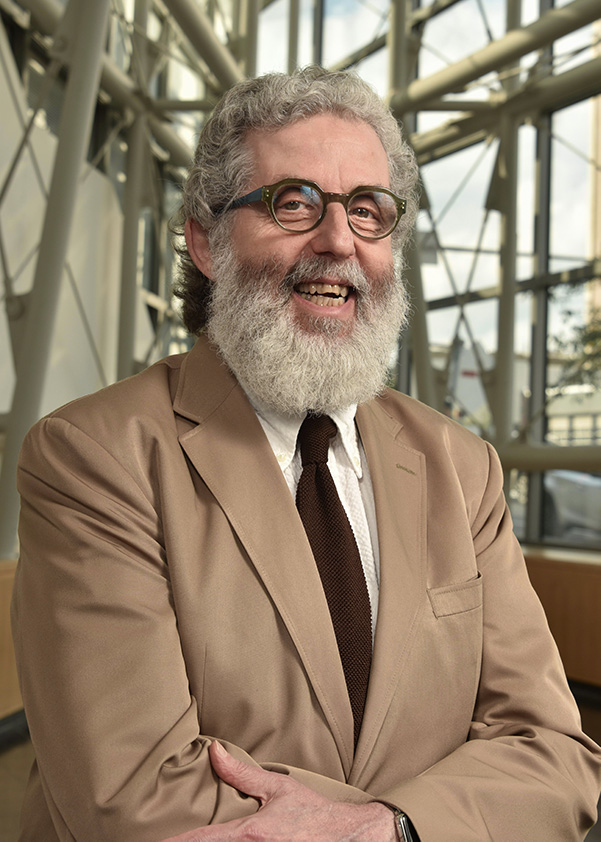
BY STEVE HENDERSHOT

We live in an age of analytics, when seemingly everything can be measured, parsed, and optimized using data science and mathematical modeling. The approach is so ingrained that it’s difficult to imagine a time when even scientific disciplines lacked that quantitative underpinning—yet that was the case when Charles Haas (BIOL ’73. M.S. ENVE ’74) studied at Illinois Tech in the early 1970s.
An undergraduate biology major from New York City, Haas was skilled and interested in both biology and math, and began to blur the boundaries between them while studying limnology, or water systems. He developed a passion for the environment—it was the era of the original Earth Day—but was dissatisfied with the way many biologists were ignoring math in their approach to ecological problems. Then he discovered environmental engineering.
“At that time a lot of biology was simply memorization without any systematic or quantitative framework. So when I discovered an alternative way of using my interest in life sciences, I jumped to it,” Haas recalls.“Environmental engineers solve problems, and I’ve always been interested in applying both the science and the math to solve problems.”
It was as a member of the Illinois Tech faculty (Haas returned to Chicago in 1981 after earning his Ph.D. from the University of Illinois at Urbana-Champaign in 1978 and then holding a junior faculty position at Rensselaer Polytechnic Institute in upstate New York) that he advanced toward his signature achievement. Haas was working as a consultant during a dispute over whether Chicago’s Metropolitan Water Reclamation District needed to chlorinate the wastewater it was discharging into waterways when he saw the need for an empirical way to assess the impact. He built his own model in an attempt to do just that—a prototype of what would ultimately become quantitative microbiological risk assessment (QMRA).
“In order to solve the problem at hand, I wound up inventing the field,” says Haas.
In the years since, QMRA has become a standard for assessing water quality: it is recommended by the World Health Organization and is a vital tool as experts confront water-quality issues around the world such as the high lead levels detected in Flint, Michigan.
Haas “was uniquely situated [to create QMRA] because of his ability to look at things from a numbers perspective and then also to translate it to [microbiologists],” says Joan Rose, a professor at Michigan State University and, like Haas, one of the world’s foremost water-quality scholars. “Engineers do this all the time because they’re very quantitative. Microbiologists didn’t, and he bridged those two things. As a result, he’s been able to make really stellar contributions.”
Haas is now the L. D. Betz Professor of Environmental Engineering and head of the Department of Civil, Architectural and Environmental Engineering at Drexel University, where he continues his water-quality research, these days focusing on “premise plumbing” issues that arise in facilities where people consume water, such as homes, schools, and hospitals. In 2017 he received the National Water Research Institute’s Athalie Richardson Irvine Clarke Prize for Excellence in Water Research.
When Haas lived in Chicago, he enjoyed a view of Lake Michigan from his home. He has a similar setup in Philadelphia, where he and his wife—whom he met while on the faculty at Illinois Tech—have a view of the Delaware River. For a scientist whose career has deftly married biology and mathematics, the waterfront is a thread connecting different chapters of his life and career, as well as a vibrant, daily reminder of nature’s beauty, value, and force.